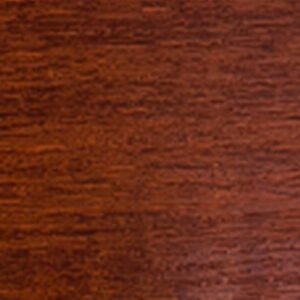Discover the Benefits of Wooden Edgebanding in Your Woodworking Projects
Woodworking is a craft that is all about detail and beauty. One technique that can significantly enhance your projects is the use of Wooden Edgebanding. In this blog post, we will explore the advantages of using Wooden Edgebanding and provide tips on choosing and applying the right edgebanding for your needs.
What is Wooden Edgebanding?
Wooden Edge banding is a wood grain edge banding that is applied to the edge of plywood or composite materials to create a seamless, natural look that mimics real wood. This edge banding is a great alternative to real wood edges that is both beautiful and practical.
Why Edgebanding Is Important
Edge banding plays a vital role in woodworking. Not only does it enhance the visual appeal of your project, it also acts as a protective barrier against moisture, impact, and wear and tear. Without edge banding, the raw edges of materials like plywood or particleboard can easily become damaged. By adding Wooden Edge banding, you can significantly increase the durability and longevity of your work.
Benefits of Wooden Edgebanding
- Aesthetic Enhancement: Wooden Edge banding gives your project a high-end look that rivals real wood. With a variety of wood species and finishes to choose from, you can easily match the edge banding to the style of your project, whether you prefer the warm tones of oak or the rich grain of mahogany.
- Durability and Protection: Edgebanding acts as a shield to prevent moisture penetration and minimizes the risk of splintering or cracking. It also adds structural integrity, making your project stronger and more durable.
- Cost-Effective Solution: Compared to real wood, Wooden Edgebanding is an affordable alternative, allowing you to achieve the same look without the high costs associated with real wood.
- Easy Installation and Versatility: Wooden Edgebanding is easy to install, making it suitable for professionals and DIY enthusiasts alike. With options such as pre-glued and iron-on edgebanding, the process becomes even more convenient. It can be used on a variety of materials, including plywood, particleboard, and MDF.

Types of Wooden Edgebanding
- Natural Wood Veneer: Made from real wood, this type offers an authentic look and is available in varieties like maple, cherry, and walnut. It can be finished with stain or varnish to enhance its beauty.
- Reclaimed Wood Veneer: Made from real wood fibers bonded together, this type offers a consistent look at a lower cost. It closely mimics the look of expensive wood.
- Pre-glued and Iron-On Edgebanding: Designed for easy installation, this type of edgebanding comes with a heat-activated adhesive. Simply position it over the edge, heat it, and press it into place.
- Unfinished and Finished Edgebanding: Unfinished edgebanding allows for customization with your preferred stain or finish, while finished options are ready to use right away.
Choosing the Right Wooden Edgebanding
When choosing Wooden Edge banding, consider the following:
- Wood Species and Grain Pattern: Match the edge banding to the dominant wood species in your project for a uniform look. Pay attention to the grain pattern, as it has a big impact on aesthetics.
- Project Style: Choose an edge banding that complements the style of your project — warm tones for a traditional look, smooth finishes for a modern design.
- Thickness and Width: The size of the edgebanding affects its appearance and durability. Thicker edgebanding gives a sturdy appearance, while narrower edgebanding gives a delicate edge.
- Finishes and Colors: Explore the wide range of available finishes and colors to find the edgebanding that’s the perfect match for your project.
Wooden Edgebanding Application
For a seamless result, follow these steps:
- Surface Preparation: Make sure your project’s edges are clean and smooth to promote proper bonding.
- Trim and Shape: Measure and cut the edge banding to length, leaving a slight overhang. Use a utility knife or edge bander for precise cuts.
- Apply Adhesive: For pre-glued or iron-on edge banding, heat the adhesive and press the edge banding onto the edge, ensuring even pressure for the best bond.
- Finishing Touches: Trim excess edgebanding and sand the edges for a smooth finish. Apply sealant to protect the edgebanding and enhance its appearance.
Troubleshooting Tips
If you experience issues such as wrinkling or bubbling, ensure the surface is clean and apply extra pressure and heat during installation for a better bond.
Our Commitment to Quality
At Luyao group, we prioritize the quality of our edge banding services. With the introduction of our new luyao edge bander, we are proud to offer better edge banding quality, tighter glue lines, and enhanced durability – all without increasing the price. This upgrade allows us to edge band panels ranging in thickness from 8mm to 60mm, ensuring a professional finish every time.
Our edged panels feature a consistent, tight glue line, ensuring durability and a seamless finish. Our customers rave about the quality of our work, making our projects easier and more visually appealing.
FAQ
- What thicknesses can I edge?
Our new machines can edge boards between 8mm and 60mm thick. - What is the minimum width for the edge?
We can edge one long edge that is 40mm wide, or two long edges that are 75mm wide. - Can I choose between 1mm and 2mm edge banding?
Yes, we offer both options, with 2mm being particularly popular for its durability. - What glue do you use?
We currently use EVA glue for excellent results, and plan to offer PUR glue in the future.
Conclusion
Incorporating wooden edge banding into your woodworking project can enhance its beauty and functionality. With a variety of options available, you can find the perfect edge banding for your needs. To learn more about our edge banding services or request a sample, please feel free to contact us.






















Leave a Reply